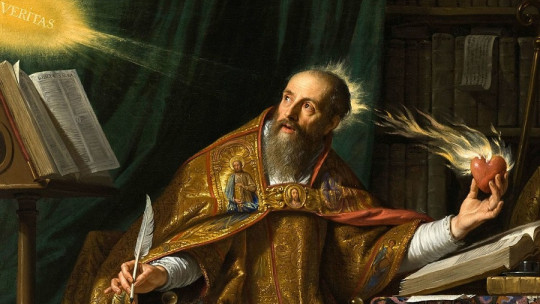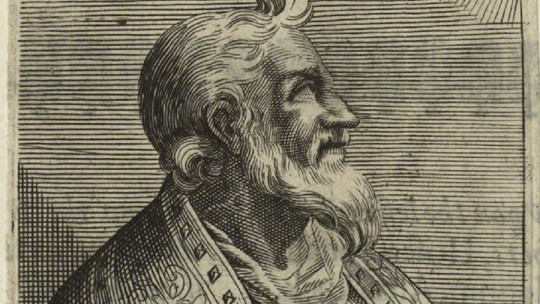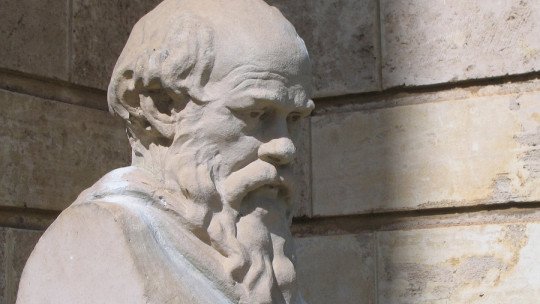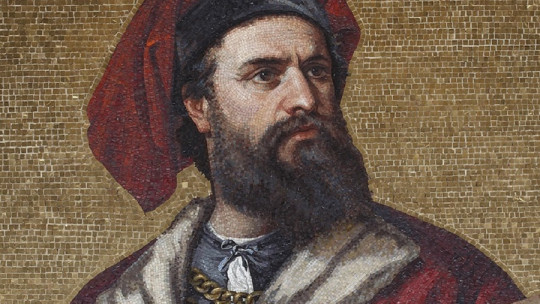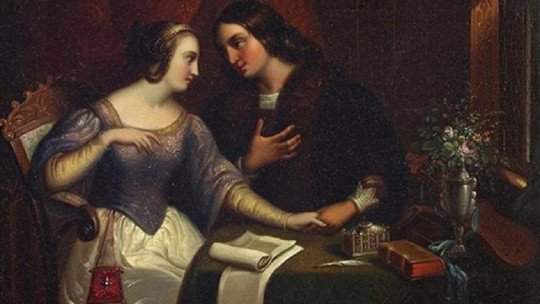
One of the first representations we have of Heloise or Héloisse de Argenteuil is a delightful miniature that appears in one of the reproductions of the Roman de la Rose, one of the most read novels of the Middle Ages. In it we see Heloise dressed as a nun (remember that she was abbess of the Paraclete), chatting animatedly with Peter Abelard, one of the most notable philosophers of the 12th century in Europe.
But perhaps the most curious thing is the text that accompanies the image, which explains that she instructed her lover on how to be one and urged him not to marry her. Although Heloise was one of the most brilliant women of the Middle Ages, the truth is that she has gone down in history for her love relationship with Abelard and, as often happens, the episode has considerably tarnished his intellectual career. In today’s article, we try to rescue this interesting figure from oblivion and demonstrate that Heloísa de Argenteuil was much more than the lover and wife of Pedro Abelard.
Brief biography of Heloísa de Argenteuil, one of the greatest intellectuals of the Middle Ages
The history of women is a commonly veiled history. If we challenge the reader to name some illustrious men, he will surely know a few. But if we urge you to name intellectual women in history, the job will probably be more difficult. At most, perhaps names of nineteenth-century writers and politicians, or directly from the twentieth century, come to mind. But what about the Middle Ages?
Although the Middle Ages is an eminently masculine period, it is no more so than the rest of the periods in history. In fact, during the medieval centuries, women enjoyed certain freedoms and privileges that would be unthinkable in modern and even contemporary times. And, of course, in the Middle Ages there were intellectual women of notable cultural background, such as the writer Christine de Pizan (1364-1431) or the woman in question, Heloise of Argenteuil (c. 1092-1164).
Uncertain origins
Much has been said about the origins of Heloise, but, despite numerous studies on the matter, His birth and lineage remain a mystery. The eminent French medievalist Régine Pernoud (1909-1998), author of the magnificent study Heloise and Abelard, suggests the possibility that she was an orphan, since she was educated during her youth in Paris, with a maternal uncle, Canon Fulbert. However, Pernoud adds, this is not a sufficient reason to believe in the girl’s orphanhood, since, in the Middle Ages, the family was considered a large element, so Heloise’s parents could well have been alive in the moment of his entry into the cloister of Notre-Dame.
On the other hand, in the interesting study The birth of Héloisse. New light on an old mystery?Brenda M. Cook, from the University of London, points out that we only have two reliable sources to clarify the gaps in our character’s life: on the one hand, the famous autobiography of her lover and later husband, Pedro Abelardo, Calamitatum history; on the other, the Obituaries of the Paraclete, the monastery of which Heloise was abbess.
In these Obituaries There are commemorations of people who have had some relationship with the religious institution. Specifically, one of them catches our attention, dated December 1, which commemorates a certain Hersinte, who would be Heloísa’s mother. As additional information, December 1 is the festival of Saint Eloi or Eligio, from whose name comes the feminized name of Heloísa.
On the other hand, in the Obituaries From the Paraclete a second name appears related to our character: Hubert, the maternal uncle and canon of Notre-Dame, commemorated on December 26. What draws powerful attention, as Brenda M. Cook points out, is the absence of references to paternal relatives, which leads one to think that Heloise may have been the illegitimate daughter of either a nobleman or a member of the Church.
“The beautiful and intelligent Heloise”
What we also don’t know is his date of birth. If we take into account that when his other uncle, Fulberto (also a canon, often identified with the Hubert of the Obituaries), she appoints Pedro Abelardo as her tutor. Heloísa is in her adolescence, we can date her coming into the world between the years 1092 and 1100. Thus, at the time the famous philosopher enters her life, the young woman must have been around sixteen or, At most, early twenties.
Heloísa’s childhood is better documented. We know that she spent her early years in the abbey of Argenteuil (from which she takes her name), located a short distance from Paris, on the banks of the Seine. There she receives, as is usual among well-born young women (another reason to believe in her noble, although illegitimate, origins) an education based on the Holy Scriptures and ancient classical texts. According to Régine Pernoud, Her thirst for knowledge is so great that the nuns of Argenteuil soon feel unable to continue instructing her so the family puts her at the disposal of Fulberto, the canon uncle of Notre-Dame, so that he can increase his knowledge.
Thus, a very young Heloise moves to the cloister of Notre-Dame, in Paris, and dedicates herself to study with true passion. We believe it is important to emphasize the fact that, in the Middle Ages, the word cloister It did not refer to what we know, but rather referred to the group of homes and families that lived under the protection of the cathedral, generally the families of the cathedral canons. In the years in which Heloise lived there, the place enjoyed ecclesiastical immunity, so the authorities could not penetrate its walls, and any criminal received political asylum there.
Heloise’s fame as an intellectual soon spread beyond the borders of the cloister of Notre-Dame. Peter the Venerable himself (d. 1156) says in a letter that he has been told about a young woman living in Paris who despises the pleasures of the earthly world to passionately abandon herself to her studies, as Régine Pernoud records in the book already aforementioned.
The surprise and admiration of the theologian cannot surprise us; In the 12th century, there were few women who, without being religious, devoted themselves to studies and strenuously rejected any temptation of the century. It seems that, in addition to being intelligent and wise, Heloise was beautiful. At least she is beginning to be known as The beauty and sauge Héloisse (The beautiful and wise Heloise) among the learned circles of the Île-de-france. In her memoirs, however, her husband Pedro Abelardo will say the opposite: that, although wise, Heloísa was not especially pretty. But perhaps these statements of the philosopher must be read in the light of the deep regret that he felt for having seduced the young woman and having abandoned himself, with her, to the pleasures of her love.
Pedro Abelardo, the great and only love
While a very young Heloise was studying in her uncle Fulbert’s house, protected by the walls of the cloister of Notre-Dame, on the bustling left bank of the Seine, the students of the University of Paris listened raptly to the great intellectual of the time: Peter Abelard (1079- 1142). It is a time of cultural effervescence and the rebirth of cities and Paris, where there is the most important Theology faculty in Christendom, will be no less.
But Abelard, as a cleric professor, has free access to the cloister of Notre-Dame, and it is precisely there where he will meet the beautiful and wise Heloise. In his memoirs, known as History Calamitatum (“History of my calamities”), Abelardo insists that the only thing that initially moved him to conquer the young woman was, precisely, her inaccessibility. Because not only does Heloise live with her uncle, the canon, but also (and as we have already mentioned), disdains anything other than study and meditation. Something that, for a being as arrogant and proud as Abelardo, is a real challenge.
Thus, the philosopher manages to enter Fulberto’s house under the pretext of giving lessons to his niece. And, of course, and without the guy knowing it, an irresistible attraction develops between them. Heloise (the beautiful, wise and prudent Heloise) finally succumbs to the man’s charms and joyfully surrenders to a love relationship that will, in a way, be the downfall of both.
Pregnancy, wedding and confinement in a convent
Unexpectedly, Heloise becomes pregnant by her master and, upon learning what has been happening under her roof, Fulberto is furious. Abelard’s obligation is obvious: he must marry Heloise to cleanse her honor. However, Heloise does not consent to this, because she believes that a legitimate union and the consequent formation of a family will nullify what she loves most in Abelard: the scholar dedicated to studies and knowledge.
Their child, whom they name Astrolabe, is born in Le Pallet, the manor of Abelardo’s family, and is left in the care of his sister. However, Fulberto has continued to press for the wedding, so the young people end up getting married in secret. However, shortly after the link, Abelardo coerces his wife to enter a convent and promises her that he will do exactly the same.
Heloise is as if under a spell. The philosopher’s ascendancy over her is very great, so, subjugated by her charms, she agrees to profess her vows. But her astonishment is great when she realizes that he has not kept what he promised. Abelardo has not entered, nor does he intend to enter, any convent. Fulberto is really furious. Abelard’s double betrayal is more than he can bear, so one night, while the young man is spending the night in an inn, he sends some henchmen to mutilate his genitals, an episode that the philosopher bitterly remembers in his memoirs as “punishment for their sins.”
The wise Abbess of the Paraclete
The lovers’ paths separate definitively. Heloise is now a nun at Argenteuil, the abbey where she studied as a child; Abelard finally fulfills her promise and, crippled and ashamed, also enters monastic life.
There are some beautiful letters, collected in an interesting compilation where, supposedly, the two spouses express what they feel from their respective places of retirement. In them, Abelard appears reserved and regretful of her “lust,” but Heloise continues to show an evident passion toward what seems to have been her only earthly love. However, there are obvious doubts about the authenticity of the letters; Many scholars believe that these are forgeries from the 17th century, when the legend of the lovers was already universally known.
One of the documentary references we have of the community of nuns to which Heloise belonged is the absorption of her abbey in 1129 by the Abbey of Saint-Denis and under the auspices of Abbot Suger. In order to annex Argenteuil’s assets, the scheming Suger does not hesitate to accuse its nuns of “impure” acts. The community, with Heloise at its head, is forced to leave the abbey, although they will continue to fight legally to have what belongs to them returned.
Abelardo comes to the aid of what was his lover and wife and, above all, intellectual companion. He offers Heloise and her nuns the Paraclete, an oratory on the outskirts of Paris, where the community settles. Over time, this monastery will become one of the most important women’s religious places in France.
Heloise becomes abbess of the Paraclete and dedicates herself during her last years to study, prayer and the composition of beautiful musical pieces, among which is a funeral prayer for his beloved Abelard, who died in 1142 and was buried in the Paracleto. Heloise finally follows him two decades later, and she is buried next to her lover. Currently, the two lovers rest in the Père-Lachaise cemetery, in Paris, and are visited daily by those who remember their tragic story. What may not be so well remembered is that Heloise was praised by numerous learned men of her time, and she was, without a doubt, one of the most brilliant intellectual women of the Middle Ages.



